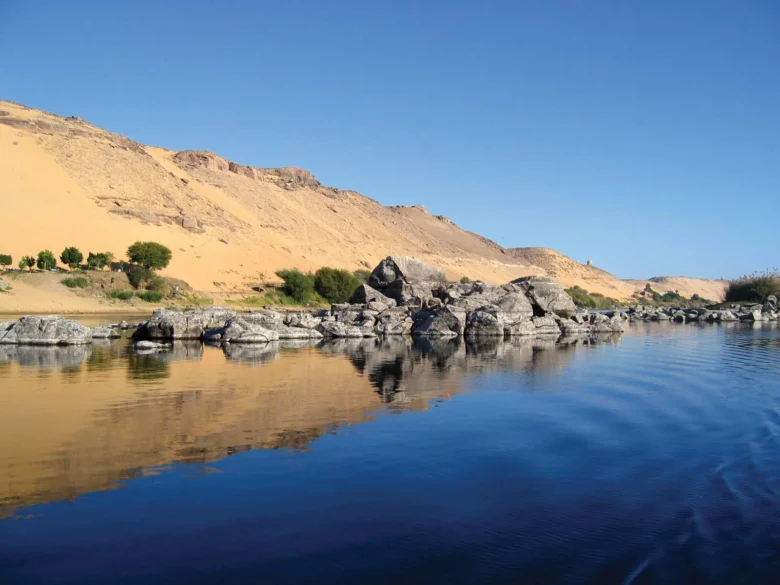Egypt’s Nile River is one of the world’s most iconic and historic waterways. Spanning over 4,000 miles, this mighty river has been the lifeblood of Egypt for thousands of years, providing water for agriculture, and transportation, and serving as a crucial trade route. The River is also the primary reason for Egypt’s survival and success, as it has allowed the development of a thriving civilization in a land that is largely arid and inhospitable.
It is more than just a river; it is a cultural, historical, and geographical wonder. It is one of the few natural wonders of the world that is still largely unchanged by human intervention. It is a source of inspiration for artists, writers, and filmmakers, and the Nile River cruise tours around the world. From the towering pyramids of Giza to the bustling streets of Cairo, the Nile River has played an integral role in shaping the culture and history of Egypt.
Contents
The History of the Nile River
The Nile River has been the lifeblood of Egypt for over 5,000 years. The ancient Egyptians believed that the River was a gift from the gods, and they worshiped it accordingly. It provided water for agriculture and allowed the Egyptians to develop a complex and thriving civilization.
It was also a crucial trade route. The Egyptians used the River to trade with neighboring civilizations, such as Nubia, Ethiopia, and the Levant. The Nile River allowed the Egyptians to develop a sophisticated economy, which in turn allowed them to build some of the most impressive structures in the world, such as the pyramids.
Unveiling the Mysteries
The River is shrouded in mystery and legend. From ancient stories of crocodile gods to modern tales of lost treasures, the Nile has captured the imagination of people around the world. Let’s explore some of the mysteries.
The Curse of the Pharaohs
One of the most famous mysteries of the Nile is the Curse of the Pharaohs. According to legend, anyone who disturbs the tombs of the pharaohs will be cursed with bad luck or even death.
The Curse of the Pharaohs became famous after the discovery of King Tutankhamun’s tomb in 1922. Many of the people who were involved in the discovery and excavation of the tomb died under mysterious circumstances, leading some to believe that the curse was real.
However, there is no evidence to support the existence of the curse. Many of the deaths that were attributed to the curse can be explained by natural causes or other factors. It is likely that the curse was a fabrication by It is likely that the curse was a fabrication by the media and those looking to profit from sensational stories. Nevertheless, the Curse of the Pharaohs remains a popular topic of discussion and adds to the allure and mystery of the Nile River.

Source: bbc.co.uk
Lost Treasures
Another mystery surrounding the Nile is the possibility of lost treasures. The ancient Egyptians were known for their wealth and love of gold, and it is believed that many treasures were buried with the pharaohs in their tombs.
Despite the many tombs that have been discovered over the years, there are still many more that have yet to be uncovered. Some believe that there are still undiscovered tombs filled with treasures waiting to be found.
In recent years, there have been several exciting discoveries related to lost treasures. In 2019, archaeologists discovered a burial shaft containing 30 sealed wooden coffins with mummies inside. This discovery was hailed as one of the most significant in recent times and shows that there is still much to be uncovered in the Nile River region.
Source of Inspiration
The Nile River has been a source of inspiration for artists and writers for centuries. It’s beauty and importance have been captured in many works of art and literature.
One of the most famous works of literature inspired by the Nile River is Agatha Christie’s Death on the Nile. The novel is set on a cruise ship traveling down the Nile River, and it has become a classic of the mystery genre. The book has been adapted into several movies, including the 1978 version starring Peter Ustinov as detective Hercule Poirot.
It has also inspired many works of art. The ancient Egyptians were known for their art, and many of their works depict scenes of life along the Nile River. Modern artists continue to be inspired by the Nile, and there are many contemporary works of art that celebrate the river’s beauty and importance.

Source: britannica.com
Visiting the Nile
Visiting the Nile River is a must for anyone interested in history, culture, and natural beauty. There are many different ways to experience this part of the world, from taking a cruise down the river to exploring the ancient temples and monuments that line its banks.
There are many different cruise companies that offer cruises along the Nile River, ranging from budget-friendly to luxury options. A cruise typically lasts around five to seven days and includes stops at many of the ancient temples and monuments along the river’s banks.
Another way to experience the Nile River is by exploring the temples and monuments that are located along its banks. Some of the most popular sites include the temples of Luxor and Karnak, the Valley of the Kings, and the pyramids of Giza.
Visitors can also take a tour of Cairo, which is located on the banks of the River. Cairo is home to many important historical sites, including the Egyptian Museum, which houses many ancient artifacts and mummies.
Conclusion
Egypt’s Nile is a must-visit destination for anyone interested in history, culture, and natural beauty. It has played an integral role in shaping the culture and history of Egypt, and it continues to inspire people around the world.
Despite the many mysteries surrounding it, there is much to be discovered and explored. Whether taking a cruise down the river or exploring the ancient temples and monuments that line its banks, a visit to the Nile River is sure to be a once-in-a-lifetime experience.
